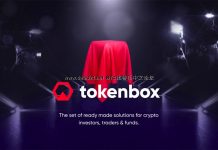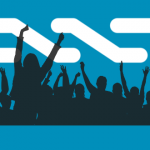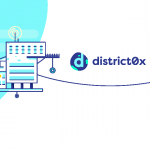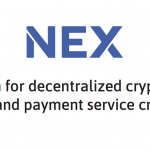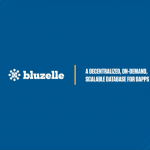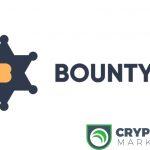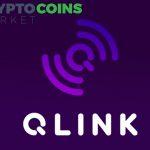Coinmark cap rank: 256.
Coinmark cap opening date: Dec 07, 2016.
Coinmark cap opening price: $ 0.095379.
Coinmarkt cap current price: $0.141747.
PROJECT OVERVIEW.
Incent is a new kind of blockchain-based loyalty token. It’s hosted on the Waves platform and can be transferred to the Ethereum blockchain through a neat piece of tech called blockswap.
BACKGROUND.
Traditional loyalty programs are hamstrung by the form of their rewards. These programs are extremely expensive to develop, implement and maintain. In 2014, companies spent $2 billion on loyalty programs in the United States. And even though loyalty programs are an expensive liability for merchants, they are cumbersome to ‘earn and burn’ and have no currency beyond the merchant issuer. Their value to consumers is low, resulting in wallets full of loyalty plastic that is rarely used.
Blockchain Changes the Game. Because Incent is a digital asset reward, merchants can outsource infrastructure costs and liabilities to the blockchain, while the consumer is rewarded with something that is genuinely rewarding: points that increase in value all the time, and can be held as an investment or spent with merchants as required.
Traditional loyalty points typically cannot be transferred, can only be redeemed with one business, and may expire. On the other hand, Incent can be freely transferred and traded thanks to the open nature of the blockchain. At the point of issuance and redemption, it is bought/sold on the open market. Thus it is actually worth something to customers and businesses – rather than the traditional fiat-style reward points that effectively function as nothing more than IOUs.
HOW IT WORKS.
The Incent plug-in allows you to build and manage a powerful loyalty reward program from within your existing platform so you can issue Incent as reward for purchases and accept it in redemption for future purchases. The only information you’ll need from customers is a contact email or cell phone number.
When the customer pays the merchant, a % of each fiat purchase is sent to BitScan, the company behind Incent, with an instruction to issue Incent to the customer wallet. BitScan keeps a reserve of Incent, which is issued to customers immediately, at point-of-sale.
Customers can hold the Incent, spend it with participating merchants (who will typically offer a discount for Incent purchases), or sell it on an exchange, if they wish.
ROADMAP.
HOW ADVANCED IS IT?
Updates in progress.
INCENT TOKEN USE CASES.
- Purchased by merchants as loyalty points.
- Used by customers to make purchases.
SIMILAR PROJECTS.
BLOCKv.
The BLOCKv platform enables the creation of smart digital objects on blockchains unlocking the potential to rapidly engage end-users and traverse digital and real-world environments. These smart objects, called vAtoms (Virtual Atoms) combine code with multimedia elements and are dynamic, compelling digital goods that make a cryptocurrency come alive as an asset for developers, brands and end users.
RibbitRewards.
RibbitRewards is a patent pending blockchain based customer reward program designed to incentivize economic activity by rewarding both buyers and sellers with a unit of value distributed from the blockchain’s decentralized ledger.
When a transaction occurs on a marketplace or on a merchant’s website that has the Ribbit.me plugin, the data is automatically fed into the RibbitRewards blockchain. A certain number of RibbitRewards are produced per block period, and dependent on the size of the transaction relative to other transactions during that period, participants receive a proportionate amount of the RibbitRewards.
The RibbitRewards are split between the buyer, the seller, a percentage to charity, Ribbit.me, and then the rest to the miners.
Chain of points.
Chain of Points is launching a platform for the creation and management of conditional stores of value–such as customer loyalty rewards and gift cards. At the core of the Chain of Points platform is the crypto-token POINTs. Broadly, POINTs are used to transfer value from merchant to customer, customer to customer, and merchant to merchant over the network.
Merchants can customize how the POINTs they issue are redeemed using Ricardian smart contracts. This allows Merchants to dictate and enforce the terms of their loyalty programs.
A Delegated Proof-of-Stake-based consensus algorithm is used to validate transactions in the network, making the system truly scalable and on a par with the transaction speeds of established financial services such as VISA.
Loyyal.
Loyyal is a universal loyalty and rewards platform, built with blockchain and smart contract technology. Smart contracts reduce system management costs by reporting secure, tracked, transparent transactions to legacy systems, reducing costs associated with errors and fraud.
Loyyal introduces interoperability to the currently fragmented industry, multi-branded coalitions, superior program liability management and dynamic issuance/redemption options customized for each unique relationship.
How is it different from other projects in the space?
Merchants have to buy Incent to use it as loyalty points.
CONCLUSION.
Interoperability with other loyalty programs and the ability to convert points between programs has been explored pre-blockchain. In other words, blockchain does not solve the problem of centralization itself – companies can reach it by ‘manual’ collaboration as they do now.
However, if blockchain technology can make starting and running a loyalty points system cheaper, easier, more secure and with better visibility over points issuance and redemption, then this would be useful.





